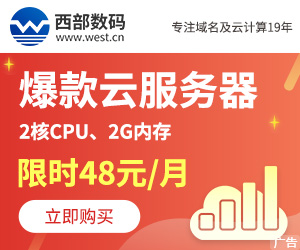这篇文章主要为大家介绍了Spring ApplicationListener源码解析,有需要的朋友可以借鉴参考下,希望能够有所帮助,祝大家多多进步,早日升职加薪
正文
对于ApplicationListener使用Spring的应该也熟悉,因为这就是我们平时学习的观察者模式的实际代表。
Spring基于Java提供的EventListener实现了一套以Spring容器为基础的观察者模式的事件监听功能,
用于只要实现Spring提供的接口完成事件的定义和监听者的定义,那么就可以很快速的接入观察者模式的实现。
ApplicationListener介绍
说ApplicationListener之前先要知道EventListener。
EventListener本身是一个接口,它的作用跟前面讲到的Aware类似,都是只定义最顶级的接口,并没有实习对应的方法,并且该接口也是由JDK提供的,并不是直接由Spring提供,Spring只是基于该接口实现了自己的一套事件监听功能。
在Spring中实现事件监听的接口是ApplicationListener,该接口继承了EventListener,并做了对应的实现。
源码如下:
package java.util;
/**
* A tagging interface that all event listener interfaces must extend.
* @since JDK1.1
*/
public interface EventListener {
}@FunctionalInterface
public interface ApplicationListener<E extends ApplicationEvent> extends EventListener {
//监听者监听事件的逻辑处理
void onApplicationEvent(E event);
static <T> ApplicationListener<PayloadApplicationEvent<T>> forPayload(Consumer<T> consumer)
{
return event -> consumer.accept(event.getPayload());
}
}ApplicationListener使用
对于ApplicationListener的使用,因为Spring已经做了自己的封装,并且以Spring容器为基础做了实现,那么开发者使用时也可以很快的上手,只要简单的配置即可。
定义事件:
//事件继承Spring中的ApplicationEvent
public class MyEvent extends ApplicationEvent {
private String name;
public MyEvent(ApplicationContext source,String name) {
super(source);
this.name = name;
}
public String getName() {
return name;
}
}定义事件的监听者
//定义监听者实现ApplicationListener,并通过泛型声明监听的事件
@Component
public class MyEventListener implements ApplicationListener<MyEvent> {
@Override
public void onApplicationEvent(MyEvent event) {
System.out.println("监听MyEvent:收到消息时间:"+event.getTimestamp()+"
【消息name:"+event.getName() + "】");
}
}@Component
public class MyEventProcessor implements ApplicationContextAware {
private ApplicationContext applicationContext;
@Override
public void setApplicationContext(ApplicationContext applicationContext)
throws BeansException {
this.applicationContext = applicationContext;
}
public ApplicationContext getApplicationContext() {
return applicationContext;
}
}发布事件
@SpringBootApplication
public class BootApplication {
@Resource
private DefaultListableBeanFactory defaultListableBeanFactory;
@Resource
private MySpringAware mySpringAware;
@Resource
private MyEventProcessor myEventProcessor;
public static void main(String[] args) {
SpringApplication.run(BootApplication.class,args);
}
@PostConstruct
public void init() {
ApplicationContext applicationContext = myEventProcessor.getApplicationContext();
//发布事件,事件发布之后,前面订阅的监听者就会监听到该事件发布的消息
applicationContext.publishEvent(new MyEvent(applicationContext,"陈汤姆"));
applicationContext.publishEvent(new MyEvent(applicationContext,"陈汤姆2"));
}
}监听者收到发布的事件信息
ApplicationListener作用
从以上的例子中可以看到ApplicationListner的模式就是设计模式中的观察者模式。
观察者模式的作用很好的解决了同步交互的问题。
以发送者和接收者为例,接收者接收消息如果同步场景下需要与发送者实现同步调用,但是这样就导致两者之间无法解耦,而ApplicationListener就是解决同步的问题,ApplicationListener可以提供半解耦的方式实现两者之间的交互,即发送者发送消息不需要与接收者之间实现同步通知,只要订阅发送者的事件即可完成双发的交互。
这里为什么是半解耦,因为两者之间还是有一定交互的,交互的点就在于发送者的发送方需要维护一个接收者的集合,发送方在发送时需要将具体的接收者放在集合中,在发送时通过遍历集合发送给接收方,执行接收方的业务处理。
在ApplicationListener这个集合就是public final Set<ApplicationListener<?>> applicationListeners = new LinkedHashSet<>(); 这个集合中就存储了接收者的实例,最终会遍历该集合执行接收者的业务逻辑。
这里抛一个问题,其实ApplicationListener的功能通过MQ也可以实现,那么观察者模式和发布订阅模式的区别是什么呢?欢迎评论区一起讨论!
ApplicationListener注册
对于ApplicationListener的注册比较好梳理的,只要找到存储ApplicationListener的集合就可以知道怎么add集合的。
在Spring中ApplicationListener的注册也是在Spring中实现的。
具体的梳理逻辑如下:
org.springframework.context.support.AbstractApplicationContext#refresh org.springframework.context.support.AbstractApplicationContext#registerListeners org.springframework.context.event. AbstractApplicationEventMulticaster#addApplicationListener
源码梳理如下:
public abstract class AbstractApplicationContext extends DefaultResourceLoader
implements ConfigurableApplicationContext {
@Override
public void refresh() throws BeansException, IllegalStateException {
synchronized (this.startupShutdownMonitor) {
// Prepare this context for refreshing.
prepareRefresh();
// Tell the subclass to refresh the internal bean factory.
ConfigurableListableBeanFactory beanFactory = obtainFreshBeanFactory();
// Prepare the bean factory for use in this context.
prepareBeanFactory(beanFactory);
try {
// Allows post-processing of the bean factory in context subclasses.
postProcessBeanFactory(beanFactory);
// Invoke factory processors registered as beans in the context.
invokeBeanFactoryPostProcessors(beanFactory);
// Register bean processors that intercept bean creation.
registerBeanPostProcessors(beanFactory);
// Initialize message source for this context.
initMessageSource();
// Initialize event multicaster for this context.
initApplicationEventMulticaster();
// Initialize other special beans in specific context subclasses.
onRefresh();
//注册观察者
registerListeners();
// Instantiate all remaining (non-lazy-init) singletons.
finishBeanFactoryInitialization(beanFactory);
// Last step: publish corresponding event.
finishRefresh();
}
catch (BeansException ex) {
if (logger.isWarnEnabled()) {
logger.warn("Exception encountered during context initialization - " +
"cancelling refresh attempt: " + ex);
}
// Destroy already created singletons to avoid dangling resources.
destroyBeans();
// Reset 'active' flag.
cancelRefresh(ex);
// Propagate exception to caller.
throw ex;
}
finally {
// Reset common introspection caches in Spring's core, since we
// might not ever need metadata for singleton beans anymore...
resetCommonCaches();
}
}
}
//将观察者注入到集合中
protected void registerListeners() {
// Register statically specified listeners first.
for (ApplicationListener<?> listener : getApplicationListeners()) {
getApplicationEventMulticaster().addApplicationListener(listener);
}
// Do not initialize FactoryBeans here: We need to leave all regular beans
// uninitialized to let post-processors apply to them!
String[] listenerBeanNames = getBeanNamesForType
(ApplicationListener.class, true, false);
for (String listenerBeanName : listenerBeanNames) {
//调用集合的add操作
getApplicationEventMulticaster().addApplicationListenerBean(listenerBeanName);
}
// Publish early application events now that we finally have a multicaster...
Set<ApplicationEvent> earlyEventsToProcess = this.earlyApplicationEvents;
this.earlyApplicationEvents = null;
if (earlyEventsToProcess != null) {
for (ApplicationEvent earlyEvent : earlyEventsToProcess) {
//获取观察者的集合
getApplicationEventMulticaster().multicastEvent(earlyEvent);
}
}
}
}public abstract class AbstractApplicationEventMulticaster
implements ApplicationEventMulticaster, BeanClassLoaderAware, BeanFactoryAware {
private class ListenerRetriever {
//存储观察者的集合
public final Set<ApplicationListener<?>> applicationListeners = new LinkedHashSet<>();
public final Set<String> applicationListenerBeans = new LinkedHashSet<>();
private final boolean preFiltered;
public ListenerRetriever(boolean preFiltered) {
this.preFiltered = preFiltered;
}
//获取观察者的集合
public Collection<ApplicationListener<?>> getApplicationListeners() {
List<ApplicationListener<?>> allListeners = new ArrayList<>(
this.applicationListeners.size() + this.applicationListenerBeans.size());
allListeners.addAll(this.applicationListeners);
if (!this.applicationListenerBeans.isEmpty()) {
BeanFactory beanFactory = getBeanFactory();
for (String listenerBeanName : this.applicationListenerBeans) {
try {
ApplicationListener<?> listener = beanFactory.getBean
(listenerBeanName, ApplicationListener.class);
if (this.preFiltered || !allListeners.contains(listener)) {
allListeners.add(listener);
}
}
catch (NoSuchBeanDefinitionException ex) {
// Singleton listener instance (without backing bean definition)
disappeared -
// probably in the middle of the destruction phase
}
}
}
if (!this.preFiltered || !this.applicationListenerBeans.isEmpty()) {
AnnotationAwareOrderComparator.sort(allListeners);
}
return allListeners;
}
}
}从以上的源码可以看到核心的集合就是applicationListeners。可以根据该集合梳理注册和执行流程。
ApplicationListener执行
注册梳理清晰,那么执行自然也很好梳理了, 毕竟使用的都是同一个集合。
ApplicationListener的执行其实就是观察者的执行,也就是在使用篇章中的MyEventListener,在MyEventListener中重写了onApplicationEvent,其中实现了自己的逻辑,那么执行就是将MyEventListener中重写的方式如何在没有同步调用的情况下执行。
执行的实现就是依赖观察者的集合,在注册中我们已经将所有的观察者添加到了ApplicationListener集合中,只要将该集合中的观察者取出执行,即可完成半解耦的执行。
梳理流程如下:
org.springframework.context.ApplicationEventPublisher#publishEvent(org.springframework.context.ApplicationEvent)
org.springframework.context.support.AbstractApplicationContext#publishEvent(java.lang.Object, org.springframework.core.ResolvableType)
org.springframework.context.event.SimpleApplicationEventMulticaster#multicastEvent(org.springframework.context.ApplicationEvent, org.springframework.core.ResolvableType)
org.springframework.context.event.SimpleApplicationEventMulticaster#invokeListener
org.springframework.context.event.SimpleApplicationEventMulticaster#doInvokeListener
源码如下:
public class SimpleApplicationEventMulticaster extends AbstractApplicationEventMulticaster {
@Override
public void multicastEvent
(final ApplicationEvent event, @Nullable ResolvableType eventType) {
ResolvableType type = (eventType != null ? eventType : resolveDefaultEventType(event));
//getApplicationListeners就是获取ApplicationListener的集合
for (final ApplicationListener<?> listener : getApplicationListeners(event, type)) {
Executor executor = getTaskExecutor();
if (executor != null) {
//执行监听者的
executor.execute(() -> invokeListener(listener, event));
}
else {
invokeListener(listener, event);
}
}
}
//执行监听者逻辑
protected void invokeListener(ApplicationListener<?> listener, ApplicationEvent event) {
ErrorHandler errorHandler = getErrorHandler();
if (errorHandler != null) {
try {
doInvokeListener(listener, event);
}
catch (Throwable err) {
errorHandler.handleError(err);
}
}
else {
doInvokeListener(listener, event);
}
}
//最终执行逻辑
private void doInvokeListener(ApplicationListener listener, ApplicationEvent event) {
try {
//调用监听者重写的onApplicationEvent方法
listener.onApplicationEvent(event);
}
catch (ClassCastException ex) {
String msg = ex.getMessage();
if (msg == null || matchesClassCastMessage(msg, event.getClass())) {
// Possibly a lambda-defined listener which we could not resolve the generic
event type for
// -> let's suppress the exception and just log a debug message.
Log logger = LogFactory.getLog(getClass());
if (logger.isDebugEnabled()) {
logger.debug("Non-matching event type for listener: " + listener, ex);
}
}
else {
throw ex;
}
}
}
}总结
从以上的梳理中,对ApplicationListener的逻辑做一个总结,对于ApplicationListener整体逻辑梳理如下:
定义事件:MyEvent就是自定义的事件
定义监听者:MyEventListener就是自定义的MyEvent的事件监听者,只要MyEvent事件被触发,那么MyEventListener就会自动执行
监听者注册:将MyEventListener注册到ApplicationListener集合中
发布事件:将自定的MyEvent发布,发布之后监听者就会收到通知
读取注册的监听者:将前面注册到ApplicationListner集合的数据读取
执行监听者监听逻辑:将读取到的ApplicationListner集合执行MyEventListner的onApplicationEvent
相关推荐





0评论